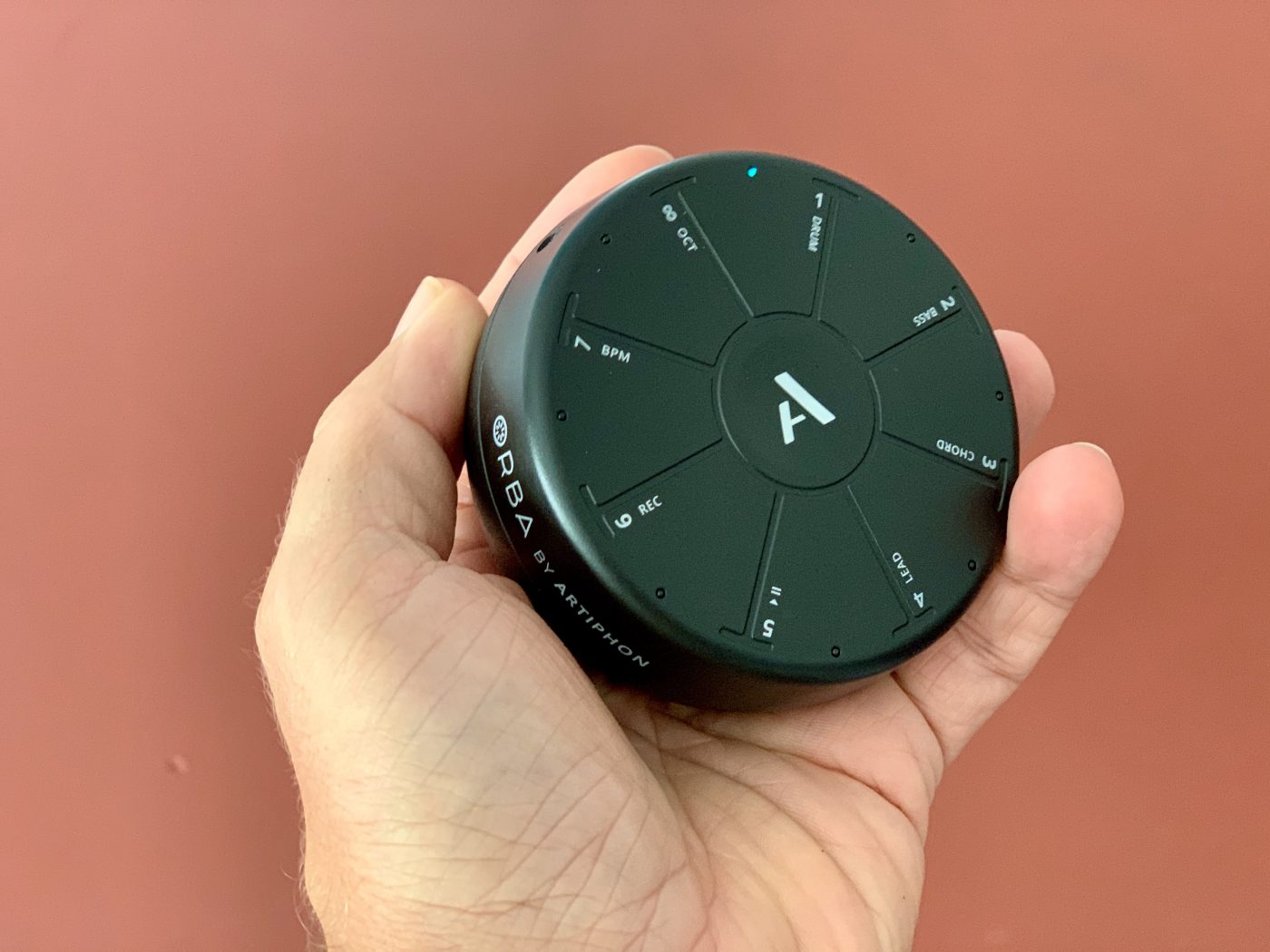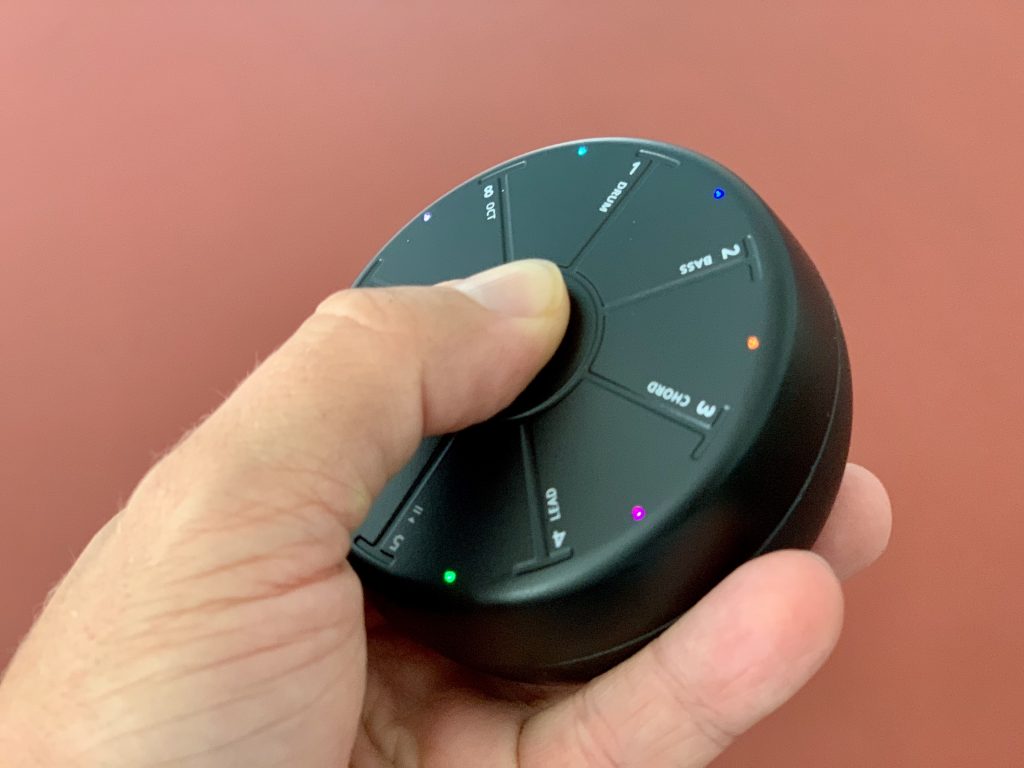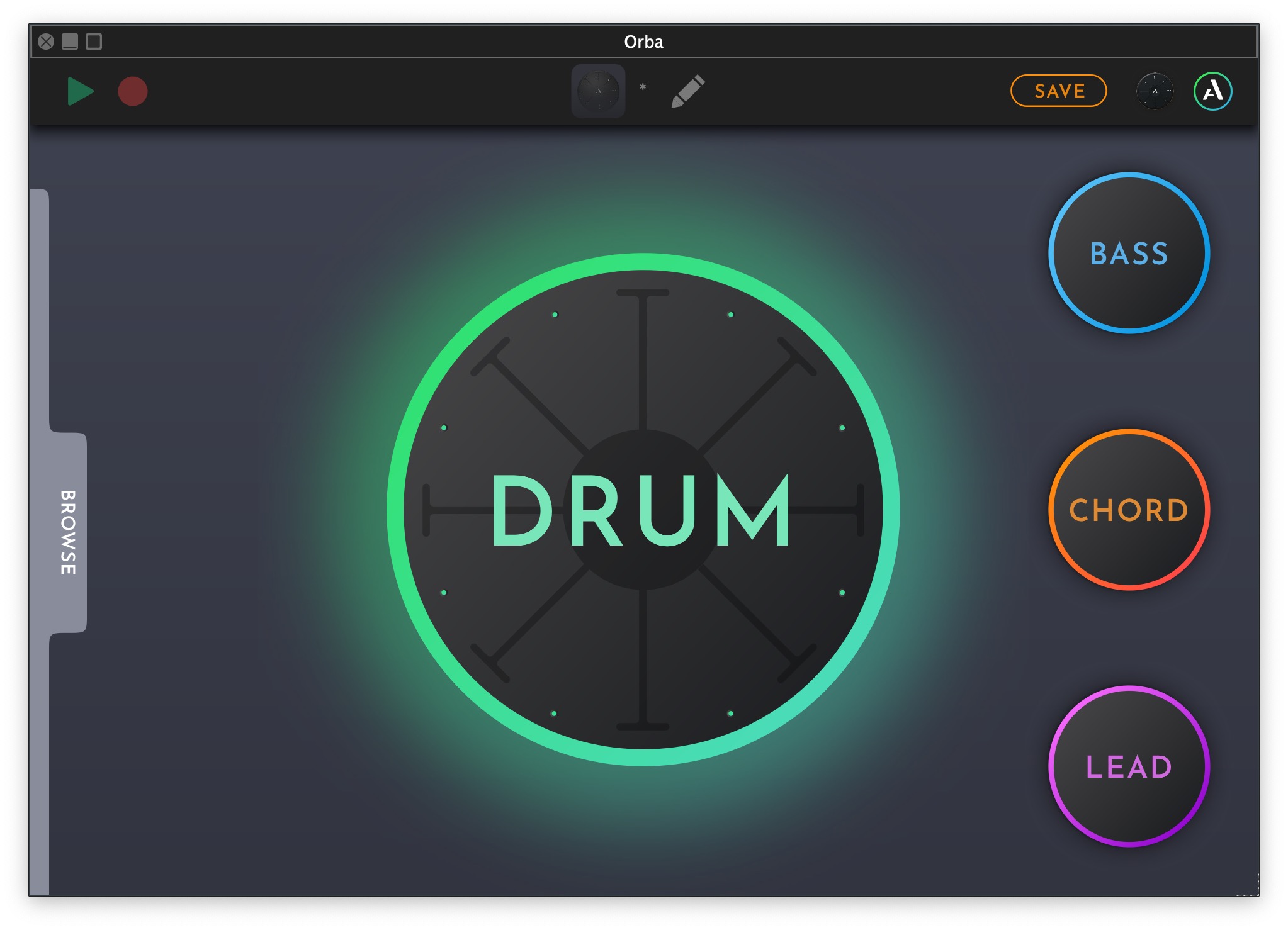Trying out ORBA by Artiphon

When Artiphon announced ORBA on kickstarter in 2019, I was intrigued. I liked their approach towards creating a musical instruments for the hands. It integrates a loop station with drum machine and synth sequencer. It felt like an innovative tangible interface with motion (accelerometer and gyroscope) and touch sensors and haptic feedback as main input mechanisms.
So now, almost one year later, I have the ORBA instrument in hand. I have to admit though, my initial excitement wore off throughout the course of the last year. Especially with intermittent product update videos on kickstarter, I was less and less intrigued. Artiphon revealed details of the design, user experience and sound quality and I didn’t like it that much. Especially the interoperability with established live performance solutions like Ableton Live, Logic Pro or Main Stage seemed lacking. Anyway, I was still still looking forward to ORBA, so I spent some hours with it over the weekend.
First Impressions
“Designed in Nashville, manufactured in China” it says on the package. The ORBA instrument seems nicely designed, yet the overall build quality feels sub bar. It feels cheap, plasticky and fragile. The ORBA itself does not infer the confidence that it would survive a single drop, even from low heights. The weight and shape feels nice in the hands, yet the tactical sensation of the instrument is somewhat toylike.







The sound quality of the build-in speaker is barely ok. It is quite loud, which is a plus, but it doe not sound pleasant. The ORBA provides USB and Bluetooth MIDI connection. But the only way to get audio out of the device is through a headphone output. This renders the highly mobile playability of the instrument ineffective. Also, the sound quality of the speaker is not great and also the sounds itself do not convince. So in the end, the main use case for the ORBA would be as a MIDI controller in my opinion.
ORBA as a MIDI controller
Same as with the audio output, it makes little sense to use the USB-C port to connect the ORBA as a MIDI controller. Since the instrument is mainly used by moving it around to adjust and shape sounds, it is hardly usable with a cable attached. It supports bumping, 3 dimensional movements, shaking and tilting as input mechanisms. None of them work well with a cable attached. As a result, only tapping, long pressing and sliding are valid input actions when used wired.

I gather, that Artiphon realised this in their development as well. In the beginning some of the product videos showed very mobile use cases, e.g. playing ORBA while dancing etc. Towards the shipment of the product this had largely shifted towards on desk or at least mostly stationary use cases. In all fairness, I think the ORBA instrument is perfectly usable for creating simple beat patterns and sound collages. The loop station works, even though with very limited features, as long as it is used as a solo instrument.
The ORBA iOS and MacOS apps
ORBA comes with a companion MacOS and iOS app (there are also apps for Windows and Android) that are not prominently advertised in the packaging. Only a tiny reference in the quick start guide made my realise it exists. I tried to connect the instrument as a MIDI controller both with cable or via bluetooth for some time. It turned out that it can only be done through use of their dedicated apps. To make things worse, the Bluetooth connection only works on the iPhone for me. I also updated the firmware on the Mac with a USB-C connection. Still, there was not way to make the device work via Bluetooth on the Mac.
To be fair, there are also other apps that help connecting the ORBA instrument to Ableton LIVE with MAX or support individual settings of presets for more precise control over the MIDI input. However, considering the user experience I had with the device, I can hardly imagine why anyone would take the effort as the instrument only provides limited usability. Still, these apps might be great. I did not try them.
The companion apps on MacOS or iOS itself are a very basic applications that feel like a cross-platform development project with very little attention to design recommendations for MacOS, iOS nor Android. As a result the user experience is horrible. The apps allow some basic presets to be loaded (in forms of new sounds for drums, bass, pads and lead). They support switching between instruments and recording loops as well as playback. Yet, these features feel badly implemented in comparison to the on device controls. Even though not perfect on the device itself, switching sounds or controlling the loop station takes longer on the apps than not the device itself.






The only reason to ever use these apps would be to pair multiple ORBA instruments to play together. Up to 5 devices are supported in the iOS app. This feels like a super cool feature. Since I was not able to test this feature, I cannot say wether this works well. Considering the rest of the experience, I have my doubts.
All in all…
I had high hopes for ORBA and was truly excited when I saw the first concepts. Yet, it turned out to be a disappointment. It wasn’t a huge investment and I don’t doubt that the instrument is well intended. Still, it doesn’t work very well and comes nowhere close to what it promised. Even as a standalone musical toy, it provides a somewhat lacking user experience and the loop station functionality is very basic.
Maybe it is too early to tell and over time the software ecosystem around the ORBA will turn out to be great. I will give Artiphon the benefit of the doubt since I really think there is huge room for innovation in regards to new instruments, ways to interact and create music. Artiphon attempted this before with their Instrument 1, which was moderate success as far as I can tell, even though it did not speak to me.
Beyond being a considerable endeavour from a musical perspective, the technical challenges attached to developing a complex tangible and mobile interface are considerable. The capability to develop functioning software that delights with great user experience is certainly key in adopting users to a new and unknown musical interface. In this area, there is certainly room for improvement. The current software for ORBA feels more like an afterthought, yet it should be centrepiece of the product itself.
So unfortunately, for me this is not working as is. Maybe I will give it another spin in a few months.
Related

